The BEL 20 index
In this article, Nithisha CHALLA (ESSEC Business School, Grande Ecole Program – Master in Management, 2021-2023) presents the BEL 20 index representing the Belgian equity market and details its characteristics.
The BEL 20 index
The top 20 companies listed on Euronext Brussels, Belgium’s main stock exchange, make up the BEL 20 index, a stock market index that measures performance. The BEL 20 index was created in 1991, and Euronext oversees its operation. The market capitalization, liquidity, and sector representation of the companies chosen for the index are taken into consideration.
The market capitalization of each stock determines its weight in the BEL 20 index, which is a capitalization-weighted index. To guarantee that the index continues to be a trustworthy representation of the Belgian equity market, it is rebalanced four times per year.
With the widely used ticker symbol “BEL20” in the financial sector, investors and traders can access the BEL 20 index through various financial news sources and trading platforms. The BEL 20 index is a useful tool for investors and financial professionals because it can give important insights into the performance of the Belgian economy and its best-performing companies.
Table 1 below gives the Top 10 stocks in the BEL 20 index in terms of market capitalization as of January 31, 2023.
Table 1. Top 10 stocks in the BEL 20 index.
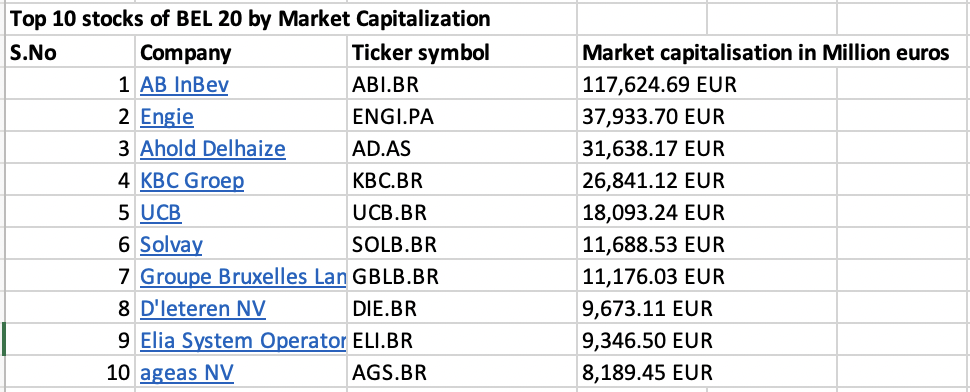
Source: computation by the author (data: Yahoo! Finance website).
Table 2 below gives the sector representation of the BEL 20 index in terms of number of stocks and market capitalization as of January 31, 2023.
Table 2. Sector representation in the BEL 20 index.
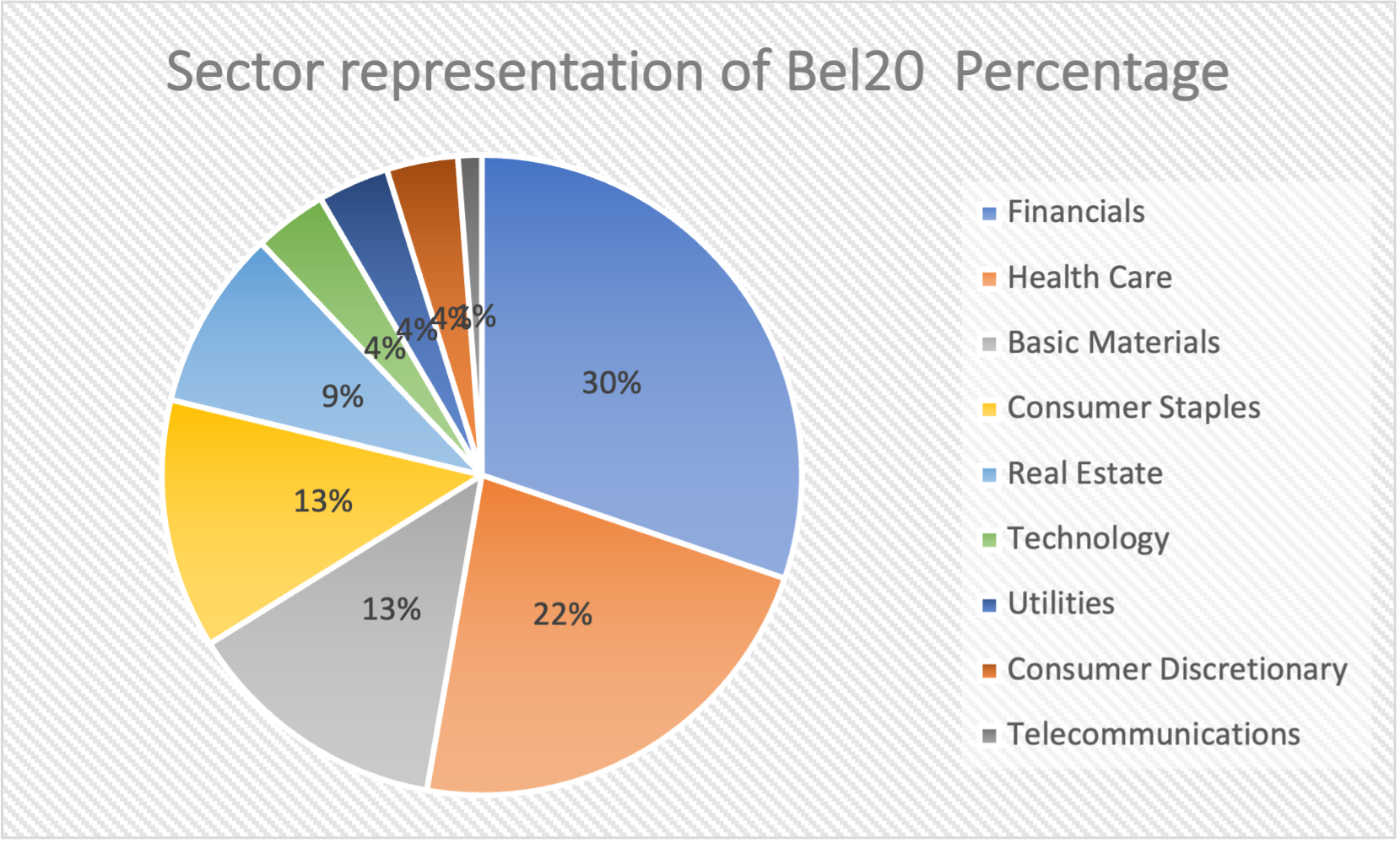
Source: computation by the author (data: Yahoo! Finance website).
Calculation of the BEL 20 index value
The performance of the 20 largest and most actively traded companies listed on the Brussels Stock Exchange (Euronext Brussels) in Belgium is reflected in the BEL 20 index, which is a float-adjusted market-capitalization-weighted index. The Belgian Association of Financial Analysts (ABAF-BVFA), which chooses the companies to be included in the index based on their liquidity, market capitalization, and free float, reviews the index on a quarterly basis.
The BEL 20 is rebalanced quarterly, taking into account any changes in the market capitalization of the constituent companies, to make sure the index accurately reflects the performance of the Belgian stock market.
The formula to compute the BEL 20 index is given by
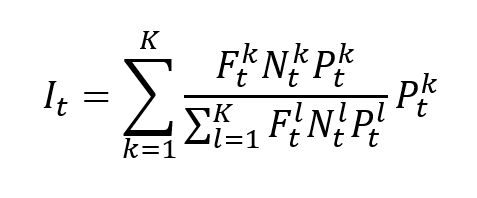
where I is the index value, k a given asset, K the number of assets in the index, Pk the market price of asset k, Nk the number of issued shares for asset k, Fk the float factor of asset k, and t the time of calculation of the index.
In a float-adjusted market-capitalization-weighted index, the weight of asset k is given by formula
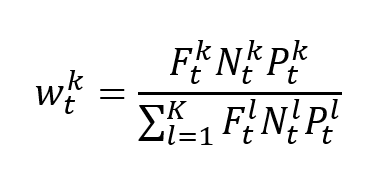
Use of the BEL 20 index in asset management
Investors frequently use the BEL 20 index as a benchmark to assess the performance of their investment portfolios in relation to the larger Belgian stock market.
Investors and analysts can learn more about the performance of the Belgian economy and its major sectors—such as financial services, consumer goods, and energy—by examining the changes in the BEL 20 index. Investors and traders can access the index using ticker symbols like “BEL20” or “BEL20.BR” and it is frequently covered in financial news outlets. Investors should take into account other indexes and benchmarks for a more thorough evaluation of the Belgian market, however, as the BEL 20 index does not cover all industries and sectors in Belgium.
Benchmark for equity funds
For equity funds investing across the board in the Belgian market, the BEL 20 index may not always be the best benchmark. This is due to the fact that the BEL 20 index does not account for the entire Belgian equity market; rather, it only tracks the performance of the top 20 companies listed on Euronext Brussels. Investors may need to take into account other broader market indices, such as the BEL Mid, which includes the 60 next most significant listed companies after the BEL 20, or the BEL Small, which includes the smallest companies listed on Euronext Brussels, in order to obtain a more complete representation of the Belgian market. Investors should therefore assess their investment goals and plans before choosing the appropriate benchmark indices.
Financial products around the BEL 20 index
The performance of the businesses that make up the BEL 20 index is the main objective of these products. Several financial products follow the BEL 20 index, including:
- Exchange-Traded Funds: ETFs that track the BEL 20 index include the Lyxor UCITS Bel 20 ETF and the iShares Bel 20 UCITS ETF
- Index funds: The Candriam Equities Belgium Index and the BNP Paribas B Fund Belgium Index are examples of index funds that track the performance of the Bel 20 index
These financial products allow investors to follow the performance of the top 20 companies listed on the Euronext Brussels exchange as well as gain exposure to the Belgian equity market. These financial products could produce returns based on the performance of the Belgian equity market and assist investors in diversifying their portfolios.
Historical data for the BEL 20 index
How to get the data?
The BEL 20 index is the most common index used in finance, and historical data for the BEL 20 index can be easily downloaded from the internet.
For example, you can download data for the BEL 20 index from January 3, 1984 on Yahoo! Finance (the Yahoo! code for BEL 20 index is ^BFX).
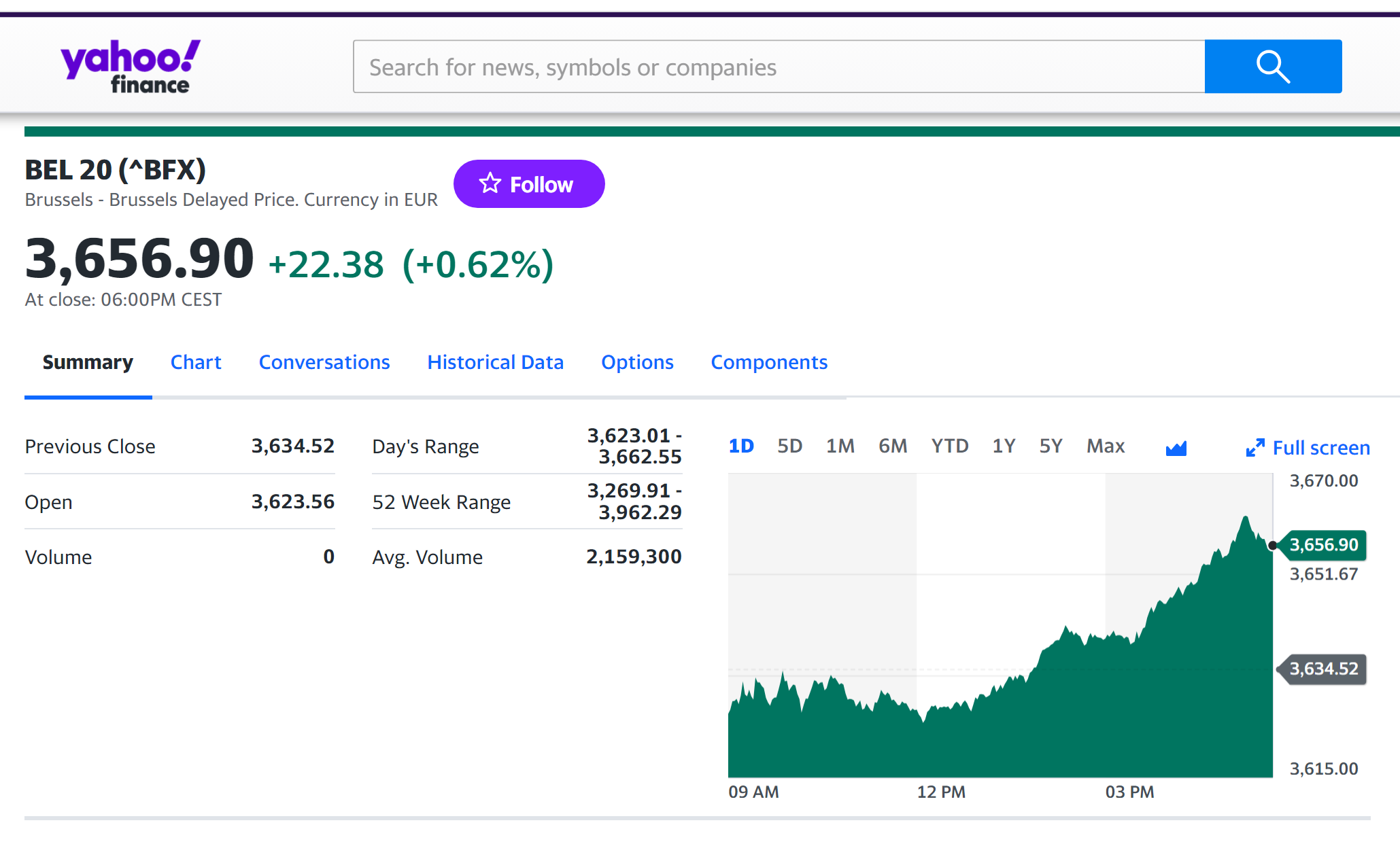
Source: Yahoo! Finance.
You can also download the same data from a Bloomberg terminal.
R program
The R program below written by Shengyu ZHENG allows you to download the data from Yahoo! Finance website and to compute summary statistics and risk measures about the BEL 20 index.
Data file
The R program that you can download above allows you to download the data for the BEL 20 index from the Yahoo! Finance website. The database starts on January 3, 1984. It also computes the returns (logarithmic returns) from closing prices.
Table 3 below represents the top of the data file for the BEL 20 index downloaded from the Yahoo! Finance website with the R program.
Table 3. Top of the data file for the BEL 20 index.
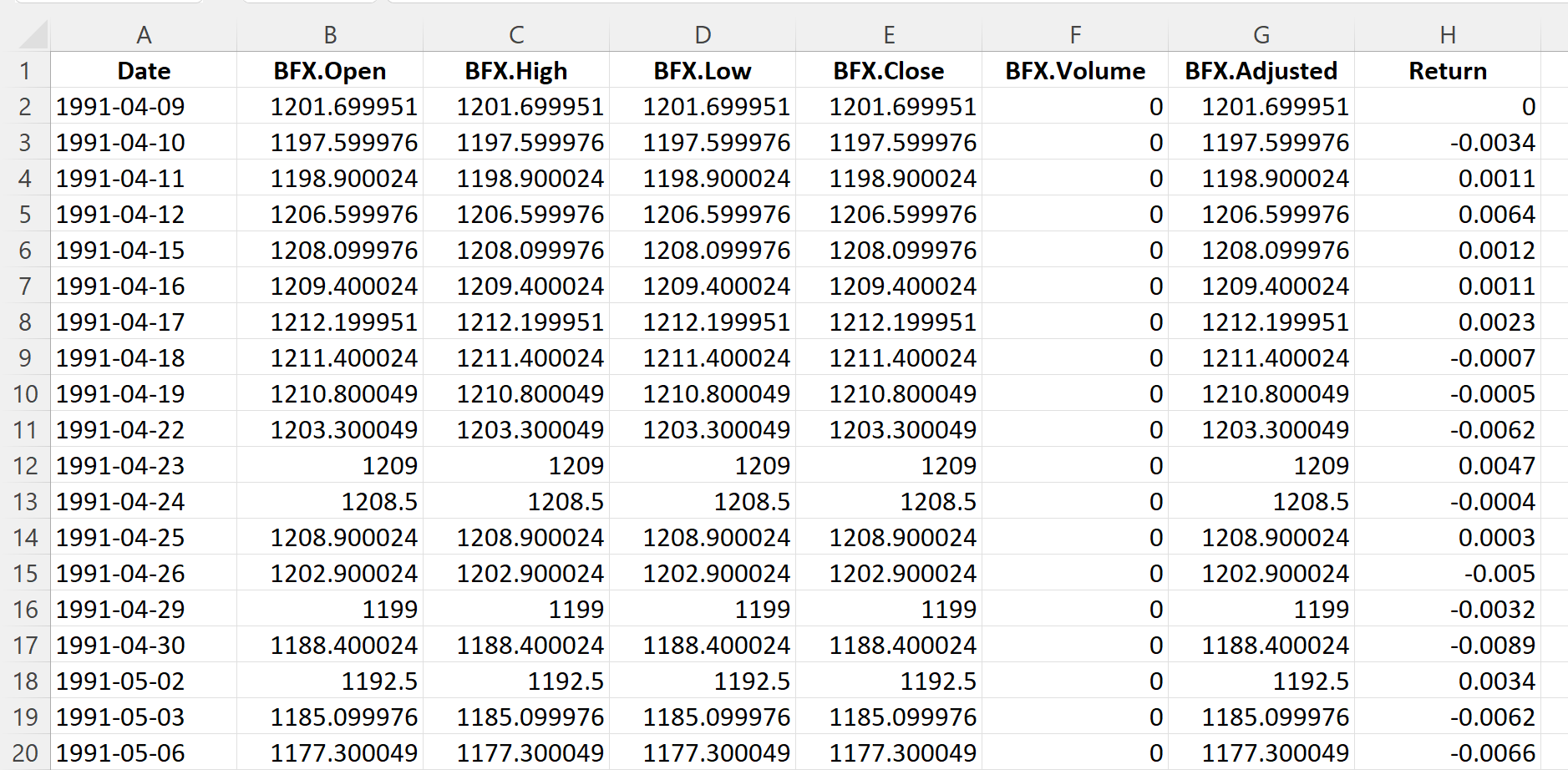
Source: computation by the author (data: Yahoo! Finance website).
Evolution of the BEL 20 index
Figure 1 below gives the evolution of the BEL 20 index from January 3, 1984 to December 30, 2022 on a daily basis.
Figure 1. Evolution of the BEL 20 index.
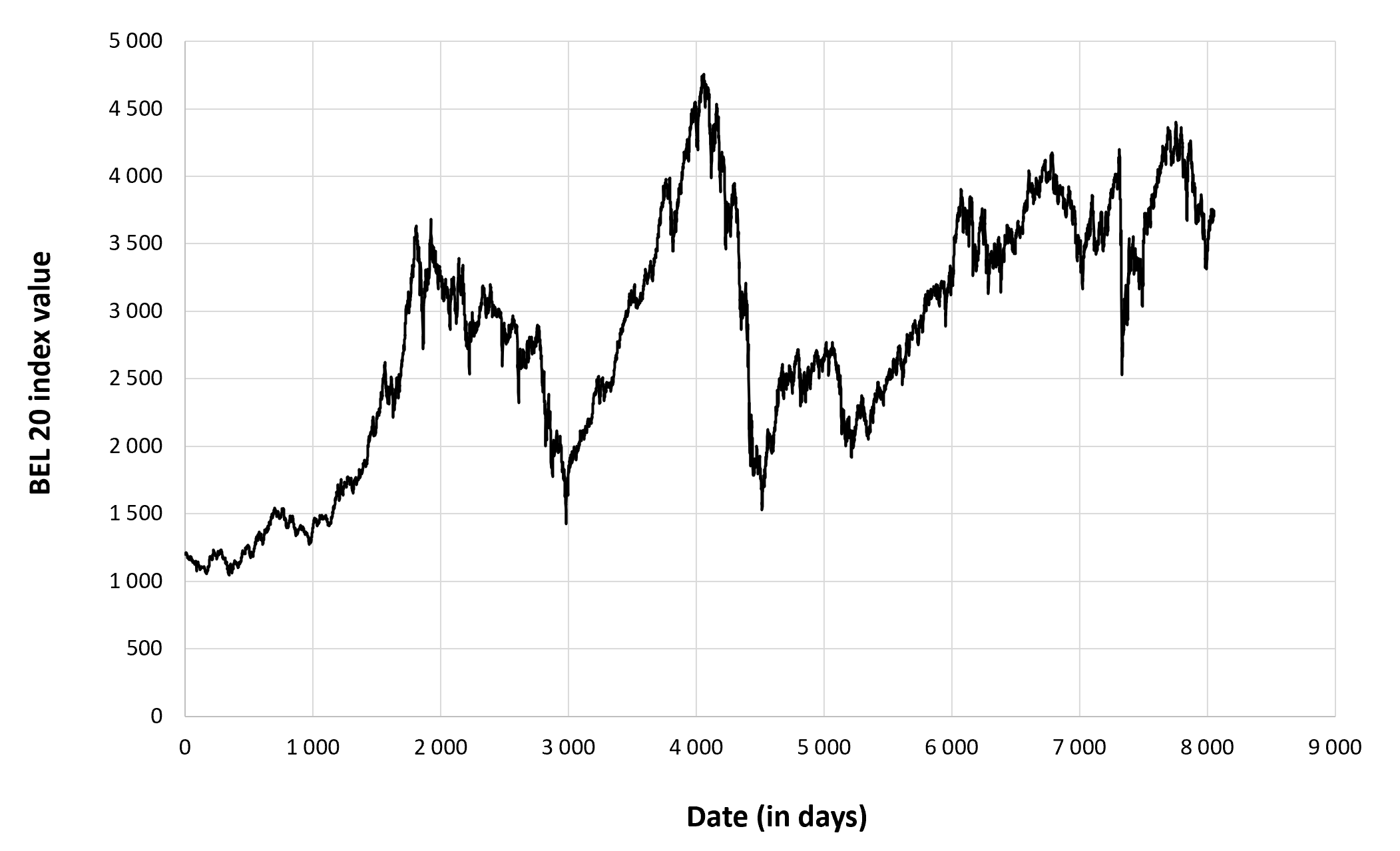
Source: computation by the author (data: Yahoo! Finance website).
Figure 2 below gives the evolution of the BEL 20 index returns from January 3, 1984 to December 30, 2022 on a daily basis.
Figure 2. Evolution of the BEL 20 index returns.
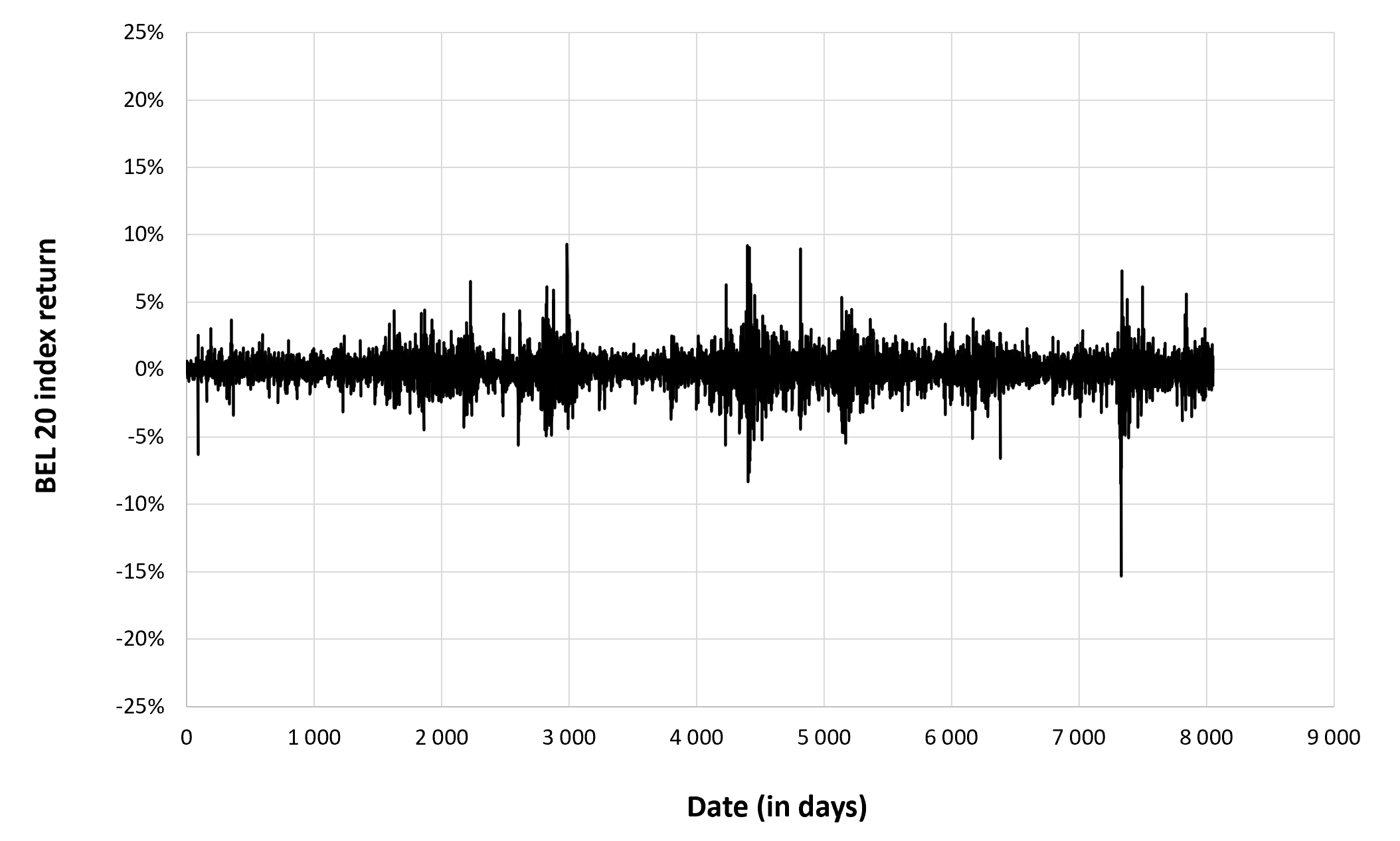
Source: computation by the author (data: Yahoo! Finance website).
Summary statistics for the BEL 20 index
The R program that you can download above also allows you to compute summary statistics about the returns of the BEL 20 index.
Table 4 below presents the following summary statistics estimated for the BEL 20 index:
- The mean
- The standard deviation (the squared root of the variance)
- The skewness
- The kurtosis.
The mean, the standard deviation / variance, the skewness, and the kurtosis refer to the first, second, third and fourth moments of statistical distribution of returns respectively.
Table 4. Summary statistics for the BEL 20 index.
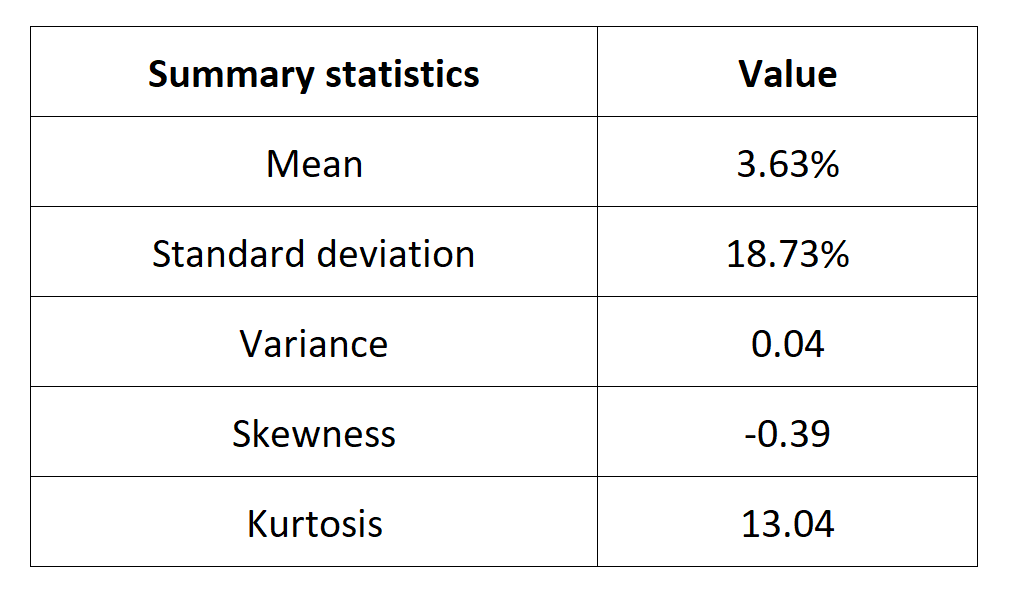
Source: computation by the author (data: Yahoo! Finance website).
Statistical distribution of the BEL 20 index returns
Historical distribution
Figure 3 represents the historical distribution of the BEL 20 index daily returns for the period from January 3, 1984 to December 30, 2022.
Figure 3. Historical distribution of the BEL 20 index returns.
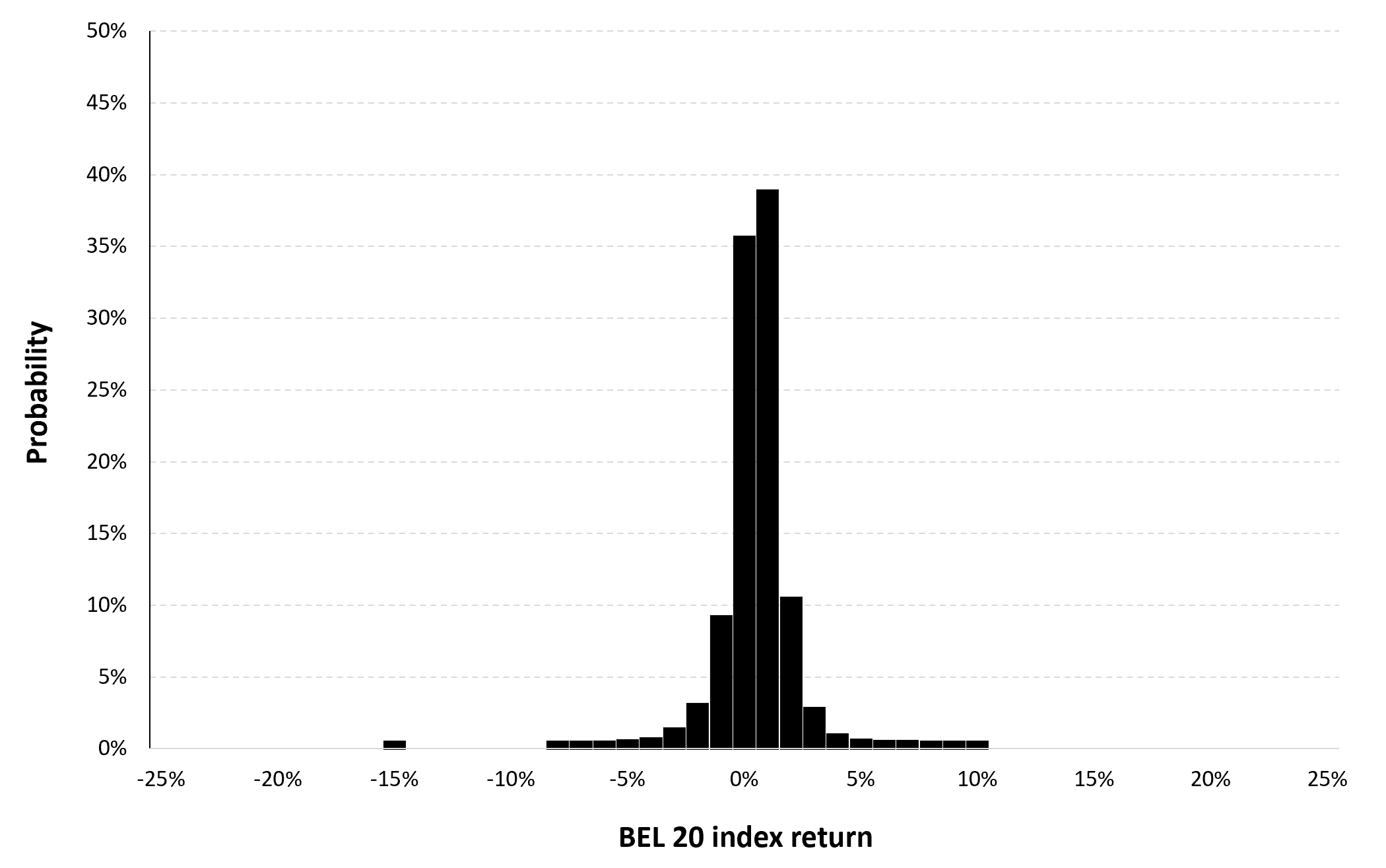
Source: computation by the author (data: Yahoo! Finance website).
Gaussian distribution
The Gaussian distribution (also called the normal distribution) is a parametric distribution with two parameters: the mean and the standard deviation of returns. We estimated these two parameters over the period from January 3, 1984 to December 30, 2022. The mean of daily returns is equal to 0.02% and the standard deviation of daily returns is equal to 1.37% (or equivalently 3.94% for the annual mean and 28.02% for the annual standard deviation as shown in Table 3 above).
Figure 4 below represents the Gaussian distribution of the BEL 20 index daily returns with parameters estimated over the period from January 3, 1984 to December 30, 2022.
Figure 4. Gaussian distribution of the BEL 20 index returns.
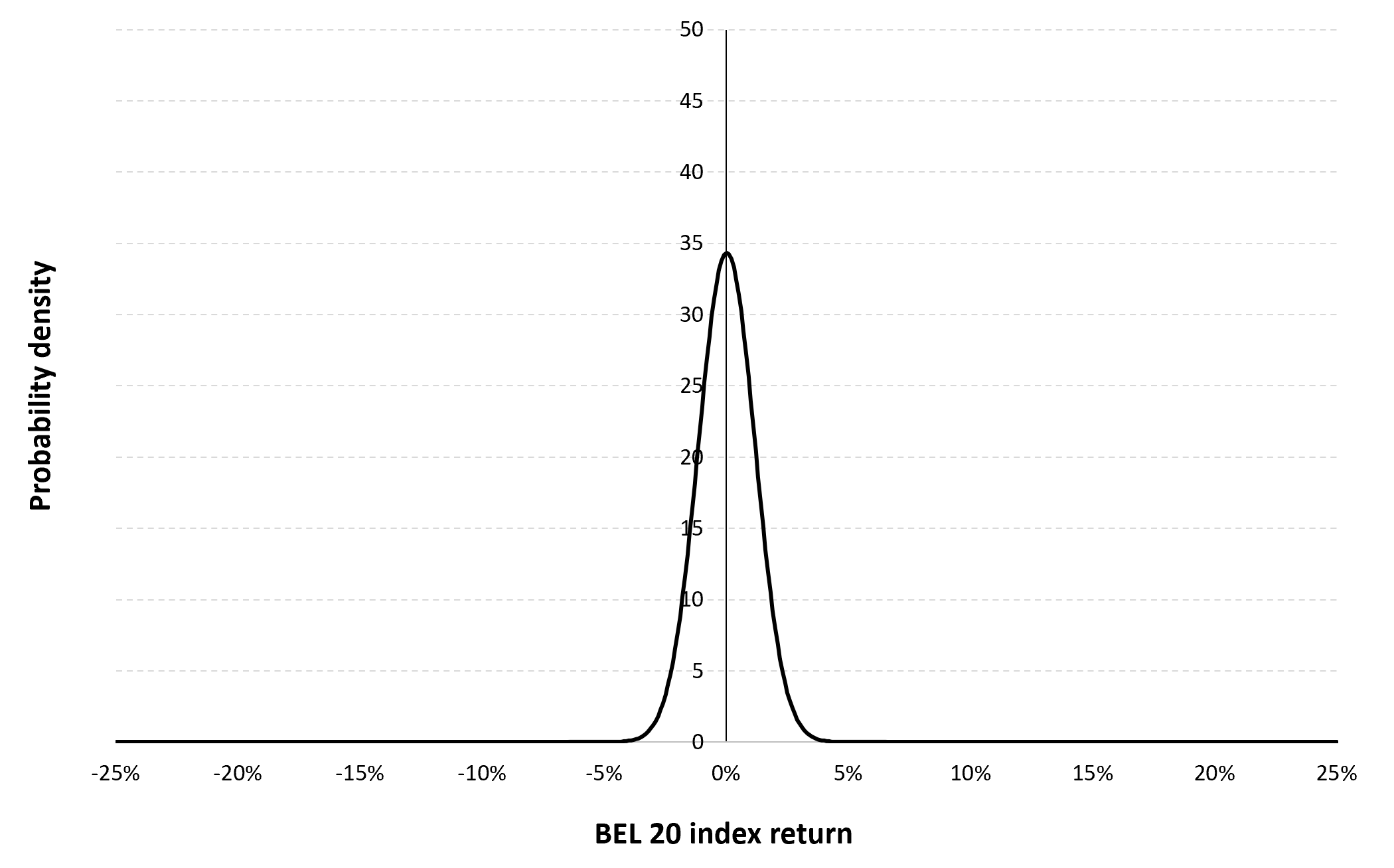
Source: computation by the author (data: Yahoo! Finance website).
Risk measures of the BEL 20 index returns
The R program that you can download above also allows you to compute risk measures about the returns of the BEL 20 index.
Table 5 below presents the following risk measures estimated for the BEL 20 index:
- The long-term volatility (the unconditional standard deviation estimated over the entire period)
- The short-term volatility (the standard deviation estimated over the last three months)
- The Value at Risk (VaR) for the left tail (the 5% quantile of the historical distribution)
- The Value at Risk (VaR) for the right tail (the 95% quantile of the historical distribution)
- The Expected Shortfall (ES) for the left tail (the average loss over the 5% quantile of the historical distribution)
- The Expected Shortfall (ES) for the right tail (the average loss over the 95% quantile of the historical distribution)
- The Stress Value (SV) for the left tail (the 1% quantile of the tail distribution estimated with a Generalized Pareto distribution)
- The Stress Value (SV) for the right tail (the 99% quantile of the tail distribution estimated with a Generalized Pareto distribution)
Table 5. Risk measures for the BEL 20 index.
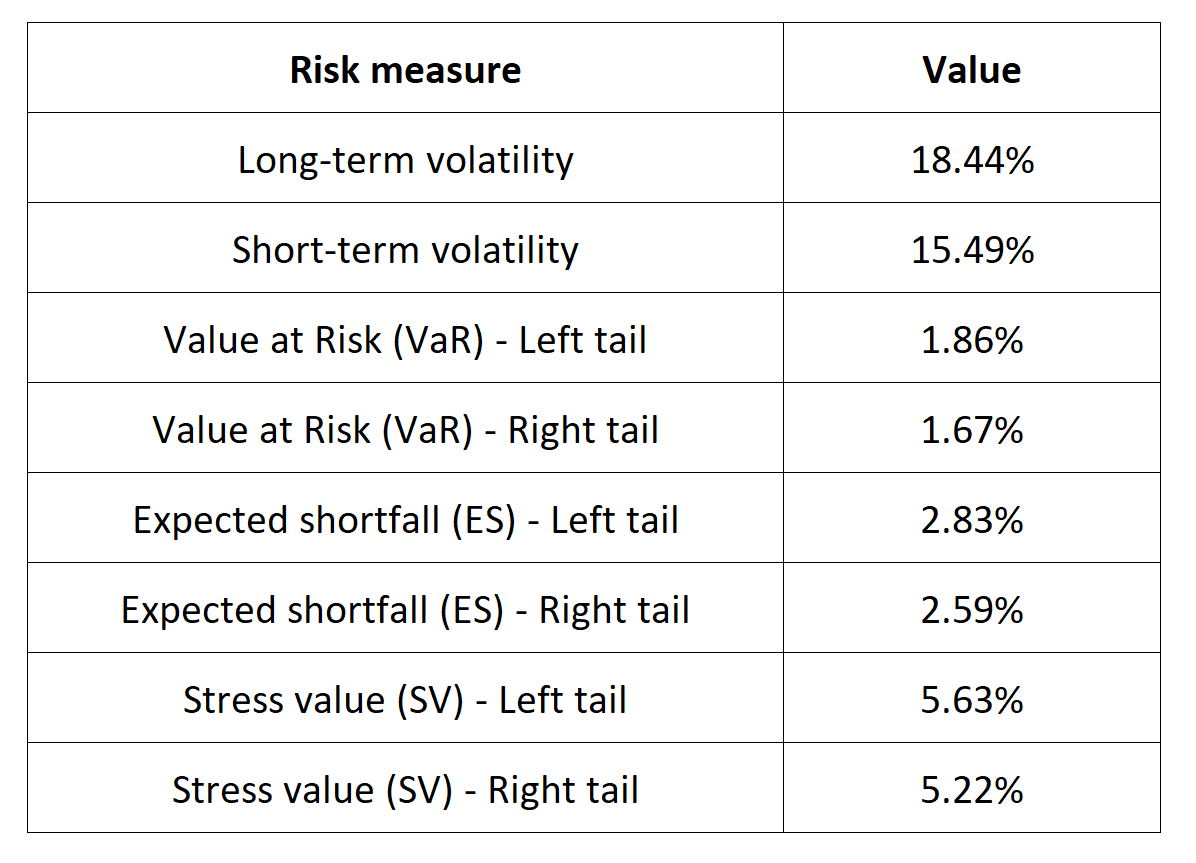
Source: computation by the author (data: Yahoo! Finance website).
The volatility is a global measure of risk as it considers all the returns. The Value at Risk (VaR), Expected Shortfall (ES) and Stress Value (SV) are local measures of risk as they focus on the tails of the distribution. The study of the left tail is relevant for an investor holding a long position in the BEL 20 index while the study of the right tail is relevant for an investor holding a short position in the BEL 20 index.
Why should I be interested in this post?
By analyzing the companies in the BEL 20 index, students can gain an understanding of how these industries operate and the factors that influence their success. For example, students can explore how regulations affect the financial services industry, how innovation drives growth in the pharmaceutical sector, and how geopolitical events impact energy markets. This knowledge can be particularly useful for those pursuing careers in finance, economics, or business.
Related posts on the SimTrade blog
About financial indexes
▶ Nithisha CHALLA Financial indexes
▶ Nithisha CHALLA Calculation of financial indexes
▶ Nithisha CHALLA The business of financial indexes
▶ Nithisha CHALLA Float
Other financial indexes
▶ Nithisha CHALLA The S&P 500 index
▶ Nithisha CHALLA The FTSE 100 index
▶ Nithisha CHALLA The DAX 30 index
▶ Nithisha CHALLA The CAC 40 index
About portfolio management
▶ Youssef LOURAOUI Portfolio
▶ Jayati WALIA Returns
About statistics
▶ Shengyu ZHENG Moments de la distribution
▶ Shengyu ZHENG Mesures de risques
Useful resources
Academic research about risk
Longin F. (2000) From VaR to stress testing: the extreme value approach Journal of Banking and Finance, N°24, pp 1097-1130.
Longin F. (2016) Extreme events in finance: a handbook of extreme value theory and its applications Wiley Editions.
About the BEL 20 index
Wikipedia What is the BEL 20 index
Currency BEL 20 index explained
Trading economics About Belgium Stock Market Index BEL20
Data
Yahoo! Finance Data for the BEL 20 index
About the author
The article was written in June 2023 by Nithisha CHALLA (ESSEC Business School, Grande Ecole Program – Master in Management, 2021-2023).


